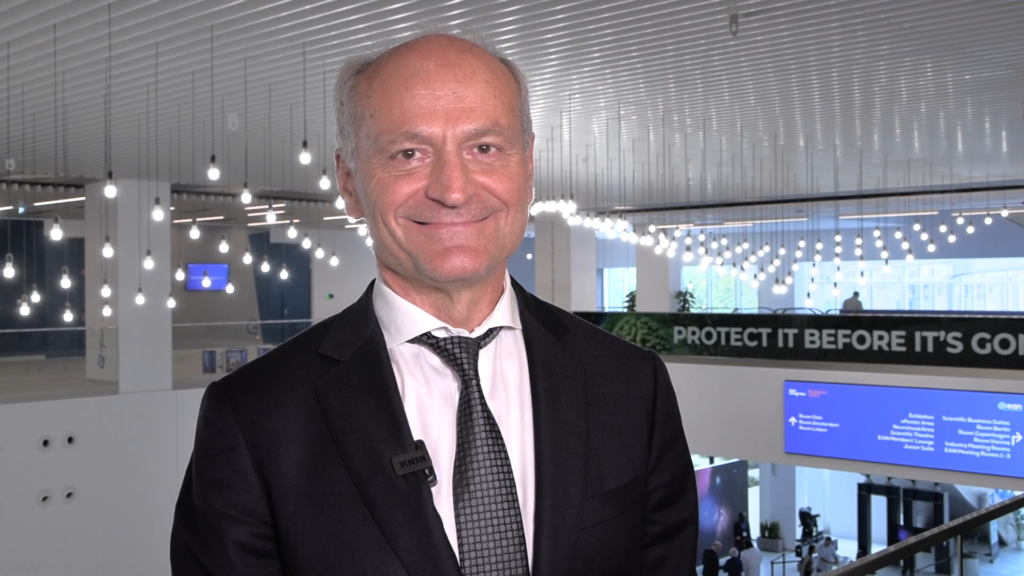Daniela Berg discusses the initiation of pharmacological treatment and the progress that has been made into finding biomarkers of neurodegeneration in early stage Parkinson’s disease.
Daniela Berg discusses the initiation of pharmacological treatment and the progress that has been made into finding biomarkers of neurodegeneration in early stage Parkinson’s disease.
FILMED AT THE INTERNATIONAL CONGRESS OF PARKINSON’S DISEASE AND MOVEMENT DISORDERS (IPMDS), JUNE 2016
WHEN SHOULD PHARMACOLOGICAL TREATMENT BE INITIATED IN PARKINSON’S DISEASE?
00:09 – This is an important question, because many patients still think, and also quite a number of doctors, “Well you can cure the disease, you have time.” But we do know that you need to start as early as possible because quality of life is just better when patients are on treatment. There’s actually a study which shows us that patients who even choose to not have medical treatment, really choose to have no medication get worse in the quality of life compared with those who chose to have medication, as though it’s the personal decision of each single individual. So it really helps. It helps of course motor symptoms not to deteriorate that quickly. And it seems to help the neurons which are still alive and which are producing dopamine not to over produce too much, because this again can accelerate the toxic process. So it seems that early therapy is of real importance, and of course if you are better in your movements, if you are not that rigid, if you are not that bradykinetic, sports and all the physical therapies, exercise is much more fun so it helps with all these aspects.
WHAT PROMISING NEW TREATMENTS ARE AVAILABLE FOR EARLY STAGE PARKINSON’S DISEASE?
01:21 – To be really honest, there are not the great, compelling new treatment options. We would love to have them; we don’t have them. And, also to be honest, we do not really have enough evidence to say that there is a really disease modulating therapies, something we would love to have. But we learn better in the last couple of years that a good combination of the therapies we have is really effective in the early stage. So beforehand we used to think that for example age is really an important cut-off: You should treat the younger ones with dopamine agonists and the older ones with L-Dopa and so on. We come to the understanding that we really should also integrate the daily activity of the person, if somebody really needs to be good in a motor function you need to apply a dopa although this person is still young. But we should stay with low dosages, not higher than 400 or 500 mg, to avoid motor complications. So, it’s again a more complex picture we have. So this individual treatment plays a major role. There are of course, besides dopamine, dopamine agonists, anticholinergics to a lesser extent for tremor, NMDA receptor antagonist, COMT inhibitors which we give rather in a later stage when we are in xxx. There are new interesting options in the horizon. I think this is always important to have hope. So people of course hope that vaccination, which is currently being studied in patient studies, will be of benefit for patients, will be of benefit with regard to disease modulation. There are other therapeutic options or hopes for example with eye insulation which is a new study which has just started. And also with individualised, personalised medicine with regard to really finding a subgroup responding to a specific therapy. For example, the subgroup of patients with pronounced mitochondrial dysfunction which can be just classified by genetic testing or stratified by genetic testing, and then you can apply a medication which really supports mitochondria, for example Q 10.
WHAT PROGRESS HAS BEEN MADE IN FINDING BIOMARKERS OF NEURODEGENERATION IN EARLY STAGE PARKINSON’S DISEASE?
03:41 – To diagnose Parkinson’s disease, as I’ve mentioned, you really need the motor symptoms. Early stage, however, means the new degenerative process before motor symptoms occur, we call that prodromal Parkinson’s disease. And here last year the research criteria for prodromal Parkinson’s disease have been published by the Movement Disorder Society. And I think the major progress is that we really try to understand the evidence for different kind, especially clinical markers like hyposmia, constipation, urinary dysfunction, depression, sleep behaviour disorder and so on. And we created a model which integrates different kinds of biomarkers, different kinds of prodromal markers which should help us to predict who of the persons assist really might be in a prodromal stage. We do not understand today the lead times so for example a person with sleep behaviour disorder and hyposmia has quite a high likelihood to develop Parkinson’s disease or alpha-synucleinopathy in the future, but we do not know when, so far. So there is still a lot to do but we understand there are clinical markers which especially in combination can be used to calculate the relative risk, the likelihood that this person is in this stage. So this is the new aspect. We still hope for more profound markers which you can for example just assess by taking blood or making whatever kind of image from your brain. We do not have that so far but there are many groups working on that and I hope that in the future, these kind of biomarkers plus the clinical biomarkers will help us to predict PD with more certainty, to start treatment at a time when you can prevent the degenerative process.












